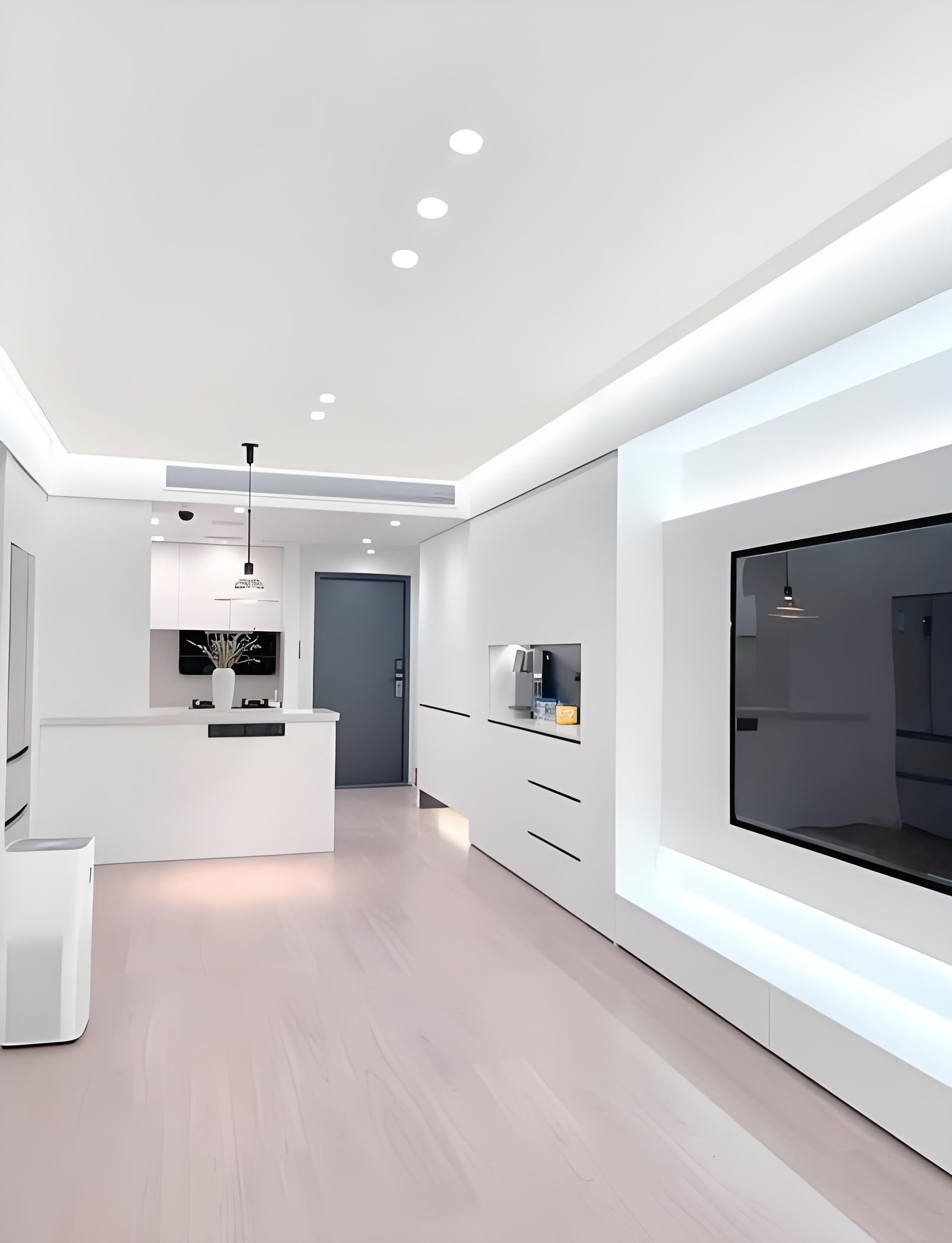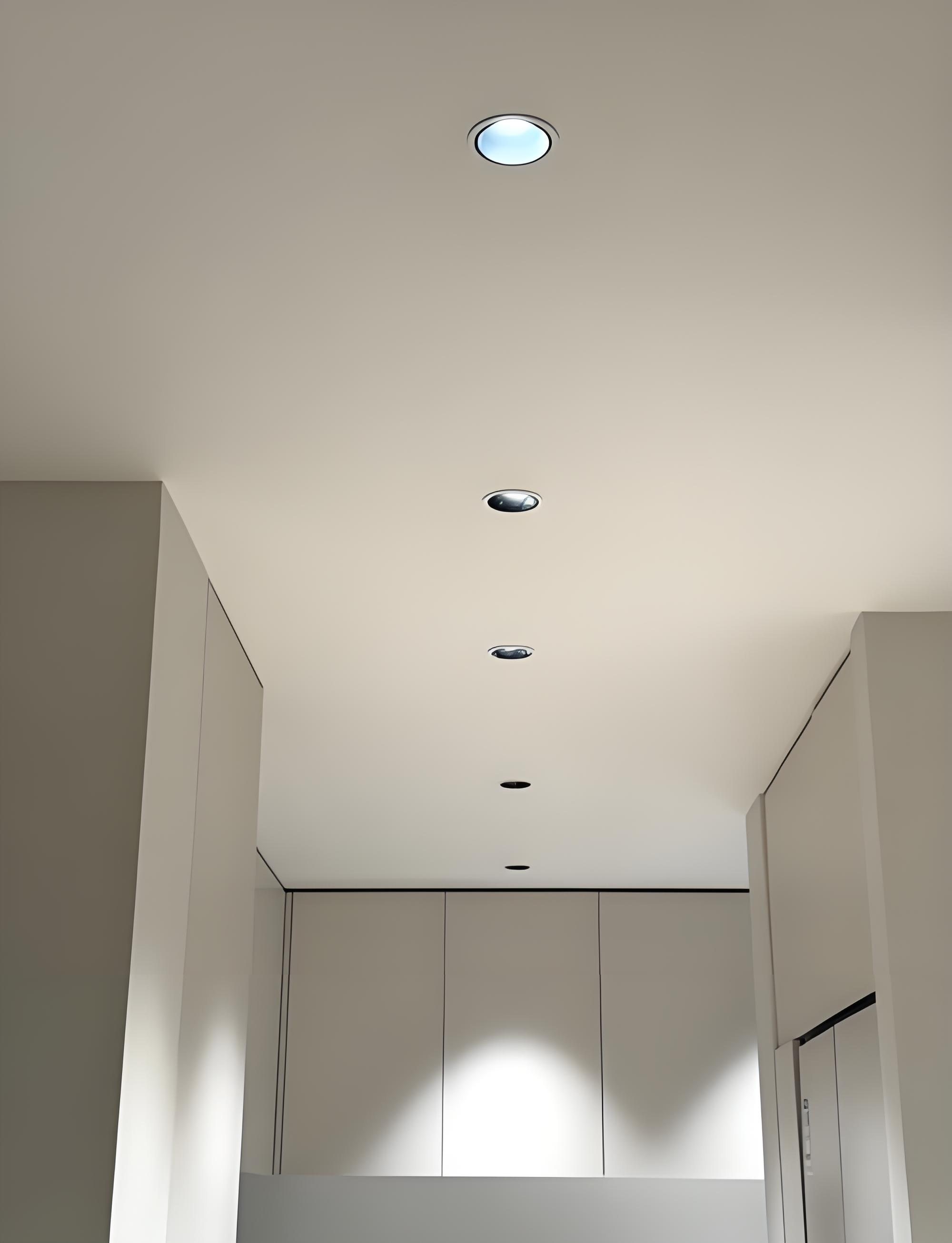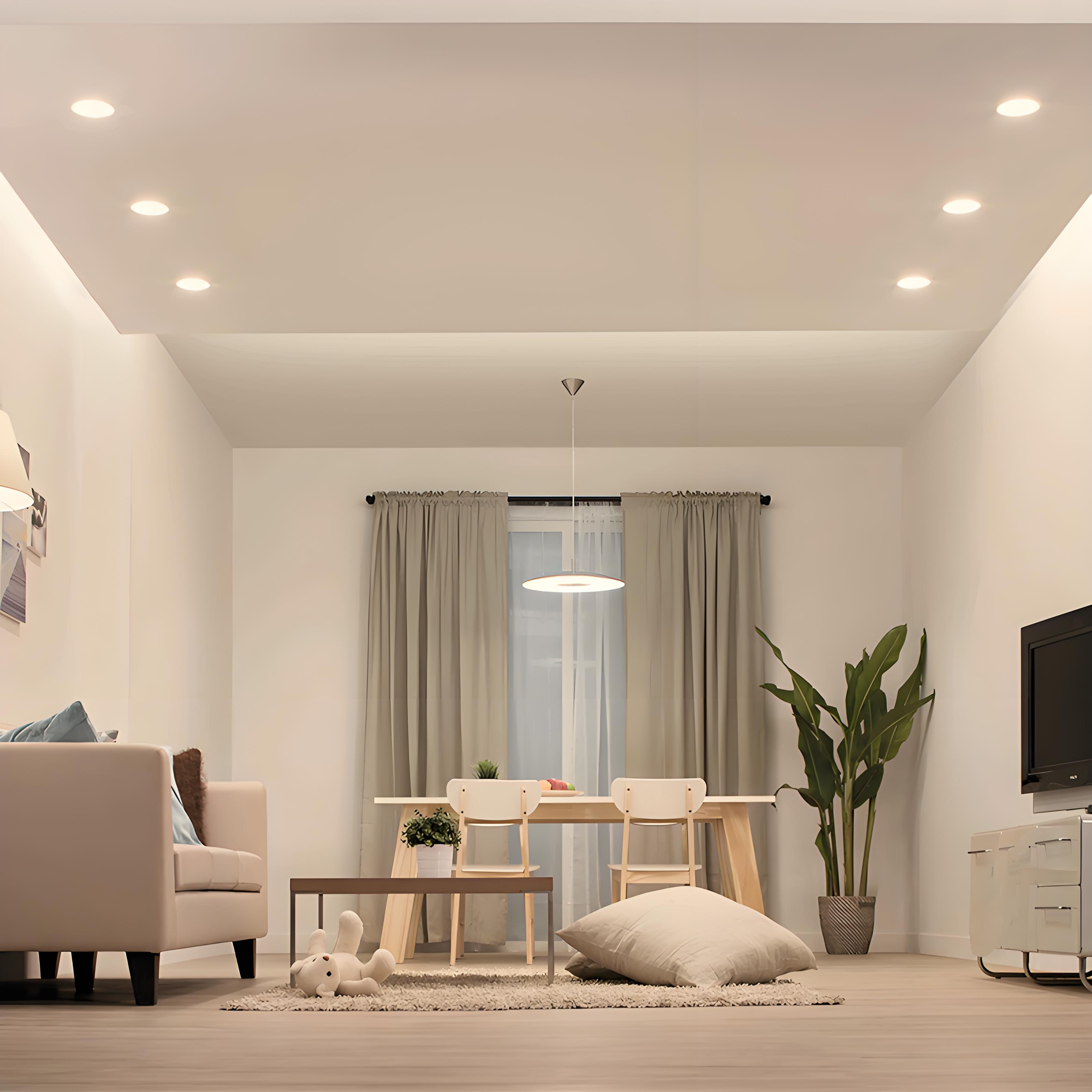With the rapid development of the Internet of Things and artificial intelligence (AI) technologies, LED downlights are undergoing a dramatic transformation from a single lighting tool to a smart ecosystem. This transformation not only redefines the future landscape of the lighting industry but also provides consumers with an unprecedented light experience. This article will delve into the three stages of LED downlight intelligent development, core technological breakthroughs, and the opportunities and challenges facing the industry. It will reveal how this traditional lighting product has achieved a leap in value through technological innovation, ultimately becoming a core component of smart homes and commercial spaces.
Industry Evolution: A Three-Phase Transition from Alternative Lighting to a Smart Ecosystem
The intelligent transformation of LED downlights did not occur overnight, but rather evolved through three distinct phases. According to industry research, the period from 2008 to 2012 was the "incubation phase" of LED lighting. During this period, LED downlights primarily served as energy-saving alternatives to traditional downlights, with relatively simple product forms and functions. The market focused on improving light efficiency and controlling costs. After 2012, the industry entered a "popularization phase," with LED downlights gradually improving in efficacy to 200 lumens per watt (lm/W). Product form factors began to break through traditional limitations, with dimming and color adjustment becoming standard features and significantly improving compatibility with traditional dimming systems like TRIAC and DALI.

Currently, LED downlights are entering the "differentiation phase," a period of intelligent development. The core characteristic of this phase is luminous efficacy approaching 300 lm/W. Products are no longer limited to lighting functions, but instead form organic connections with the environment and users through two-way interactive communication technologies. Smart downlights launched by leading companies such as Bomeier and Jinshanxi can automatically adjust based on ambient light and occupancy, and even learn from user habits to achieve personalized lighting. Particularly noteworthy is the transformation of LED downlights from standalone products into system nodes. For example, Bomeier's smart downlights can seamlessly integrate with smart home platforms like Home Assistant, enabling scene-based interaction with security and audio-visual equipment.
Industry experts point out that the intelligent transformation of LED downlights bears striking resemblance to the development trajectory of the mobile phone industry: from function replacement to function innovation, and ultimately to an ecosystem platform. As stated on page 4: "In the future, lighting fixtures will be simply a form of home terminal, integrating functions such as lighting, security monitoring, and data transmission." This assumption is being validated by the product strategies of leading companies. For example, Guangzhou Jinshanxi's latest patent application for an IoT-enabled cultural and creative downlight integrates environmental sensing, remote control, and cultural and creative display features, demonstrating a clear trend of cross-industry integration.
The depth of technological integration determines the value of smart downlights. During the intelligent transformation, LED downlights have gradually developed a "hardware + software + service" architecture, with hardware as the carrier, software as the core, and services as the creator of sustainable value. This architectural shift has transformed downlights from one-time sales products into iteratively upgradeable smart terminals, opening up new business models for manufacturers, such as software subscriptions and data services, and fundamentally changing the value creation logic of the traditional lighting industry.

Technological Breakthroughs: Four Core Technologies Driving the Transition to Smart LED Downlights
LED downlights' leap to smart LEDs relies on the coordinated breakthroughs of four key technologies, which together form the cornerstone of this product transformation. Dimming and color adjustment are the most fundamental intelligent capabilities. Modern smart downlights generally use PWM (pulse width modulation) technology for precise brightness control, enabling 16 million color adjustments through RGB light mixing or dual-color temperature LED combinations. Notably, leading companies such as CYT have developed fully digital dimming control systems, extending the dimming range to 0.1%-100% and enabling continuous color temperature adjustment from 3000K to 6000K, providing users with unprecedented precision in controlling the lighting environment.
IoT communication technology is the neural network of smart downlights. Mainstream solutions currently on the market include Wi-Fi, Zigbee, Bluetooth Mesh, and DALI wired protocols, each with its own advantages and disadvantages: Wi-Fi is suitable for direct home connections; Zigbee excels in network scale and low power consumption; Bluetooth Mesh facilitates direct mobile phone connections; and DALI offers stability and reliability in professional lighting projects. The widespread adoption of high-performance wireless modules like the ESP32 has significantly lowered the development threshold for smart downlights. The cost of controller solutions based on WLED open-source firmware has dropped to 20 RMB, significantly promoting the widespread adoption of smart technologies. Guangzhou Jinshanxi's patented IoT downlight emphasizes communication stability design, optimizing the protocol stack to ensure reliable connectivity even in complex environments.
Environmental sensing and artificial intelligence empower downlights with the ability to think. The latest generation of smart downlights often integrate ambient light sensors, infrared sensors for human motion, and even millimeter-wave radar, enabling real-time sensing of environmental changes and automatic adjustments. More cutting-edge products like Philips Hue already have simple learning capabilities, recording user habits and generating personalized lighting plans. Bomeier smart downlights collect usage data through a cloud platform and apply algorithms to optimize lighting strategies for commercial spaces, achieving the optimal balance between energy consumption and comfort.
Mechanical structure and installation innovations are equally important. Guangdong Tianyi Lighting's multi-directional, remote-control technology enables precise 360° horizontal and 180° vertical adjustment of downlights, improving installation stability by 21% and assembly and disassembly efficiency by 55%. Jin Shanxi's damping shaft design allows for more flexible and convenient downlight angle adjustment, adapting to various installation scenarios. While these innovations may not be as eye-catching as electronic technology, they significantly enhance the practical user experience and engineering adaptability of smart downlights.

Comparison of core technologies of smart LED downlights
Technical Field | Traditional solution | Smart Solutions | Improvement effect |
Dimming control | Analog dimming, segmented color grading | Digital PWM dimming, continuous color adjustment | 100 times more accurate and richer colors |
Communication Method | Wired Switch Control | Wi-Fi/Zigbee Wireless Network | Enables Remote, Scenario-Based Control |
Environmental Interaction | None | Light Sensing + Human Sensor + AI Learning | Significantly Improved Automation |
Structural Design | Fixed-Angle Mounting | Multi-Directional Rotation Adjustment | Significantly Enhanced Lighting Flexibility |
Application Scenarios: Reconstructing Value from Home to Commercial Use
The value of smart LED downlights manifests itself in diverse applications, and this contextual differentiation is a key manifestation of product intelligence. In the home, smart downlights have evolved from simple functional lighting to a core element in creating an atmosphere. Through a mobile app or voice control, users can switch between scene modes like "movie," "reading," and "sleep" with a single click, with the downlight automatically adjusting to the preset brightness and color temperature. More cutting-edge applications, such as Philips Hue, enable music-synchronized lighting effects, allowing the lighting to change with the rhythm of the melody, greatly enriching the home entertainment experience. Jin Shanxi's cultural and creative downlights further incorporate artistic elements, projecting specific light patterns to enhance the aesthetics of a space, demonstrating the deep integration of lighting and aesthetics.

The demand for smart downlights in commercial lighting is even more complex and diverse. In shopping malls, Bomeier smart downlights can automatically adjust accent lighting based on product characteristics and customer traffic, enhancing product display. In hotels, they can memorize guest preferences to create a personalized stay. Webpage 6 points out that the intelligent application of downlights from leading brands in commercial spaces has gone beyond basic lighting and evolved into "data nodes." By analyzing light usage data, businesses can optimize their business strategies, such as adjusting shelf layouts or promotional periods. This shift from a "lighting tool" to a "business decision-making support system" signals a profound transformation in the value creation of smart downlights.
The demand for smart downlights in office environments focuses on balancing energy efficiency and health. Modern smart downlights automatically adjust based on changes in natural light and occupancy, maintaining a constant desk illumination of around 500 lx. This meets the needs of visual tasks while avoiding excessive lighting and energy waste. Some high-end models can also simulate the color temperature changes of natural light (cooler in the morning and warmer in the evening), helping to regulate users' circadian rhythms and improve work efficiency and physical and mental well-being. Bomei's solutions for the office sector emphasize "on-demand lighting" through zone control, which can save over 40% in energy compared to traditional lighting.
The application of smart downlights in public spaces emphasizes safety and management. For example, smart downlights in subway stations can be linked to monitoring systems to automatically boost lighting in specific areas when anomalies are detected. Downlights in libraries can automatically adjust based on foot traffic and outdoor light levels to maintain a comfortable and consistent reading environment. Guangzhou Jinshanxi's patented technology demonstrates that the next generation of IoT downlights can even integrate emergency lighting functions, automatically switching to full brightness upon receiving fire signals in emergencies to provide evacuation guidance. This multifunctional integration significantly improves the management efficiency and safety of public lighting.
Notably, different application scenarios have different technical emphases for smart downlights: homes emphasize ease of use and contextual experiences; commercial spaces prioritize light quality and data analytics; offices seek a balance between energy efficiency and health; and public facilities prioritize reliability and management integration. This differentiated demand is driving the development of smart downlights towards specialization and segmentation, giving rise to product lines optimized for different scenarios and further enriching the industry ecosystem.
Challenges and Outlook: Industry Transformation in the Process of Smartization
Despite its promising prospects, the intelligent transformation of LED downlights still faces multiple challenges, both technically and related to market and industry chain restructuring. Cost pressure is the primary obstacle. Smart downlights typically command a 30%-50% premium over standard products, primarily due to the addition of sensors, wireless modules, and complex control systems. Bomeier, in its market competition analysis, noted that higher prices may inhibit consumer adoption, particularly in price-sensitive second- and third-tier cities. However, as technological economies of scale emerge, this gap is gradually narrowing. For example, ESP32-based solutions have reduced the cost of smart control to extremely low levels.
Compatibility and fragmentation are also prominent issues. The current smart lighting market is plagued by a variety of communication protocols and platform standards, making downlights from different brands often incompatible, hindering the system-level experience. A comment on page 4 is insightful: "Similar to computers and operating systems, the lighting industry will also have application software platforms and compatible hardware platforms." The industry urgently needs to establish unified interface standards, otherwise it will repeat the "islanding" mistakes of the early days of smart homes. Some leading companies have recognized this issue, such as Bomeier, which is actively integrating into the Home Assistant ecosystem, and Jinshanxi, which is adopting mainstream IoT protocols to enhance product interoperability.
Security and privacy risks are becoming increasingly prominent as smart technology becomes more and more widespread. Connected downlights can become a gateway for hackers. Once compromised, they can not only cause uncontrolled lighting but also threaten the security of the entire home network. Furthermore, protecting the data collected by smart downlights, such as usage habits and family members' activities, has become a key concern for consumers. Addressing these issues requires chip-level security design and transparent data policies, such as end-to-end encrypted communication and localized data processing. While these measures increase costs, they are crucial for gaining user trust.
Looking ahead, the intelligent development of LED downlights will demonstrate three major trends. Technological integration will deepen, and downlights may integrate additional functions such as air quality monitoring, wireless charging, and indoor positioning, becoming comprehensive sensing terminals for smart spaces. Personalized services will become a core competitive advantage, using AI to learn user preferences and integrate factors such as circadian rhythms and weather to provide adaptive lighting solutions. Sustainable design is also becoming increasingly important, including modular structures for easier maintenance and upgrades, the use of environmentally friendly materials, and further improvements in energy efficiency, making the product lifecycle greener.
The intelligent evolution of LED downlights is essentially a microcosm of the lighting industry's transformation from "manufacturing" to "smart manufacturing." As predicted by Page 4: "The third (lighting revolution) will be an intelligent lighting technology revolution led by LEDs. During this period, product characteristics and application methods will undergo fundamental changes." In this transformation, successful companies need not only technological innovation capabilities but also a systematic approach to ecosystem building and user experience design. Brands that can integrate hardware, software, and services to provide complete solutions for specific scenarios are most likely to lead the industry's future, transforming simple light-emitting devices into intelligent media connecting people and space.



